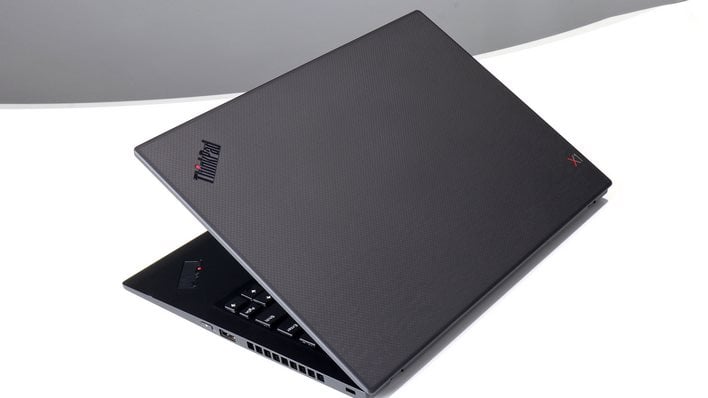Lenovo ThinkPad X1 Carbon Review: Lenovo's 7th Gen Flagship Impresses
|

All of the systems with Intel's HD Graphics kind of cluster together near the bottom of the chart. Out of that cluster, however, the ThinkPad X1 Carbon 7th generation stands tall, just four percent behind the only system with Intel UHD 620 graphics that posted a better score: Dell's XPS 13. Everything else either has faster AMD Vega integrated graphics or a discrete GPU with much higher performance. Considering the size, weight, and thermal headroom of the system, the X1 Carbon acquits itself nicely in this first test.


Here's a little bit of a surprise. The ThinkPad's Core i7-8665U CPU comes in handy when compared to the other systems with integrated graphics. Lenovo gets a 16% win over the next-closest system, Acer's Swift 3. Still, even the weak, low-power MX150 doubles the ThinkPad's performance in this DirectX 12-focused test. If there's enough thermal headroom, even the weakest discrete mobile GPU today makes this no contest.
|

Again, those Intel UHD 620-equipped systems clump up at the rear of the pack. Almost all of them are separated by a frame per second on average and also have similar low framerates. Subjectively the game is free from stuttering or really obvious hitches, but 20 fps isn't much fun any way you slice it. If you turn the graphics down to Medium, the ThinkPad X1 Carbon almost doubles its GRID Autosport performance, coming up to 46.45 frames per second, and the game still looks pretty decent in motion.
Other older games run pretty well on the ThinkPad, too. StarCraft II at 1080p and Medium settings preset was mostly playable, but in big fights the framerate drops at inopportune times. We found we could play just fine at 1366x768 on the same Medium. The same was true of Diablo III, too. 1080p was a big lift for the tiny UHD 620 graphics processor, but 768p and some judicious graphical tuning turned in a good performance. For road warriors who like to game a little in their downtime, the ThinkPad X1 Carbon does well enough that you're more likely to have a problem with hotel Wi-Fi than you are graphics for Blizzard's always-online titles.
Next up we'll take a look at battery life, cooling performance, and noise levels.








